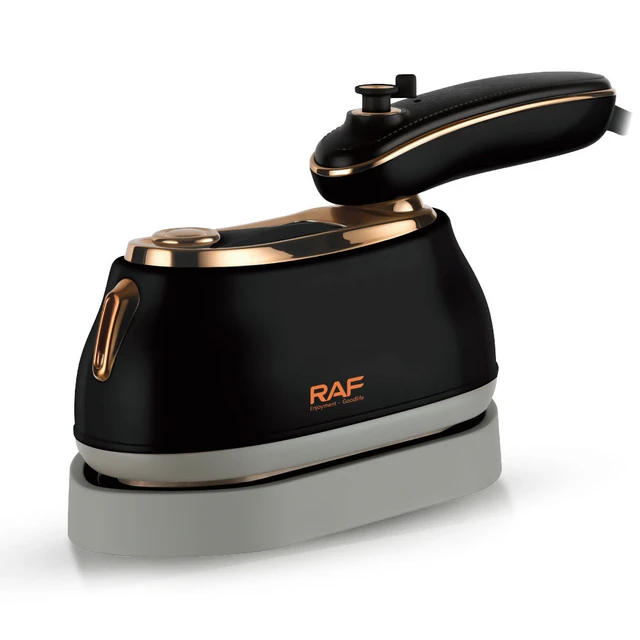Introduction
Deep wrinkles in fabric can be stubborn and challenging to remove, but with the right techniques and tools, you can restore your fabric to a smooth and wrinkle-free state. Whether you are dealing with clothes, linens, or other textiles, this guide provides specific instructions and tips to help you effectively eliminate deep wrinkles from your fabrics. From proper preparation and moisture application to utilizing heat and pressure, we will explore various methods to ensure your fabrics look pristine and well-maintained.

How do you get deep wrinkles out of fabric?
Preparing the Fabric for Wrinkle Removal
1.1. Clean the Fabric
Start by ensuring that the fabric is clean and free from any dirt or stains. Launder or dry clean the fabric according to its care instructions before attempting to remove the deep wrinkles. This will prevent the wrinkles from setting further during the process.
1.2. Assess the Fabric’s Material and Heat Tolerance
Consider the type of fabric you are working with and check its heat tolerance. Some fabrics, like silk or delicate synthetics, require lower heat settings or alternative methods to prevent damage. Refer to the fabric’s care label or consult a professional if you are unsure about the appropriate temperature or technique.
Moisture Application Techniques
2.1. Damp Cloth Method
Dampen a clean cloth with water and gently rub it over the wrinkled areas of the fabric. Apply even pressure as you move the cloth along the fabric, focusing on the deepest wrinkles. The moisture will help relax the fibers and release the wrinkles.
2.2. Spray Bottle Method
Fill a spray bottle with water and mist the wrinkled fabric evenly. Allow the water to penetrate the fabric for a few minutes to soften the fibers. Gently stretch and smooth the fabric with your hands to encourage the wrinkles to release.
2.3. Steaming Method
Using a garment steamer or handheld steamer, direct the steam over the wrinkled areas of the fabric. Keep a safe distance to prevent the fabric from becoming too wet or damaged. Use your hands or a pressing tool to smooth and stretch the fabric as you steam, encouraging the wrinkles to fade.
Applying Heat and Pressure
3.1. Ironing Method
Set your iron to the appropriate temperature for the fabric you are working with, ensuring it is suitable for removing deep wrinkles. Place a clean pressing cloth or fabric over the wrinkled area to protect the fabric from direct heat. Apply gentle pressure and slowly glide the iron over the cloth, focusing on the deepest wrinkles. Repeat as necessary until the wrinkles are diminished.
3.2. Pressing Tool Method
If the fabric is delicate or heat-sensitive, consider using a pressing tool, such as a dry iron press or a handheld press, to remove the deep wrinkles. Place the fabric between two sheets of pressing cloth and apply pressure using the pressing tool. The combination of heat and pressure will help smooth out the wrinkles without directly exposing the fabric to high temperatures.
3.3. Heavy Objects Method
For larger textiles or fabrics that are difficult to iron or press, consider using heavy objects to apply pressure. Lay the fabric flat on a clean surface and place heavy books, weights, or other flat objects evenly over the wrinkled area. Leave the weights in place for a few hours or overnight to allow the weight to press down on the fabric and release the wrinkles.
Hanging and Drying Techniques
4.1. Hanging to Dry
After applying the appropriate method to remove the deep wrinkles, hang the fabric on a clothesline or hanger to air dry. Gravity will help the fabric stretch and relax, minimizing the appearance of wrinkles. Make sure the fabric is properly aligned and hanging freely to prevent new wrinkles from forming.
4.2. Stretching and Smoothing
While the fabric is drying, gently stretch and smooth the fabric with your hands to encourage the fibers to settle into a wrinkle-free state. Pay extra attention to the areas that were deeply wrinkled, applying gentle pressure to smooth out any remaining creases.
4.3. Using Fabric Softeners or Dryer Sheets
If the fabric is suitable for machine drying, consider adding a fabric softener or dryer sheet to the dryer. These products can help reduce wrinkles by relaxing the fabric fibers during the drying process. Follow the product instructions and ensure it is safe to use for the specific fabric you are treating.
Additional Tips and Considerations
5.1. Test on a Small, Hidden Area
Before applying any moisture, heat, or pressure methods to the fabric, test the technique on a small, inconspicuous area. This will help you assess whether the method is safe and effective for your fabric. If any negative effects are observed, discontinue the process and seek alternative methods or professional assistance.
5.2. Patience and Persistence
Removing deep wrinkles from fabric may require multiple attempts or a combination of methods. Be patient and persistent in your efforts, taking care not to rush or apply excessive pressure that could damage the fabric. Slow and gentle techniques are often more effective and safer for delicate fabrics.
5.3. Professional Assistance
If you are dealing with valuable or delicate fabrics, or if the deep wrinkles persist despite your efforts, consider seeking professional assistance. Professional dry cleaners or fabric care experts have specialized knowledge and equipment to handle challenging fabrics and stubborn wrinkles.
Conclusion
Removing deep wrinkles from fabric requires careful preparation, moisture application, and the appropriate application of heat and pressure. By choosing the right technique for your fabric type and size, you can effectively release deep wrinkles and restore the fabric to a smooth and well-maintained state. Remember to assess the fabric’s material, clean it properly, and test any method on a small area before proceeding. With patience and persistence, you can confidently tackle deep wrinkles and enjoy wrinkle-free fabrics in your everyday life.
